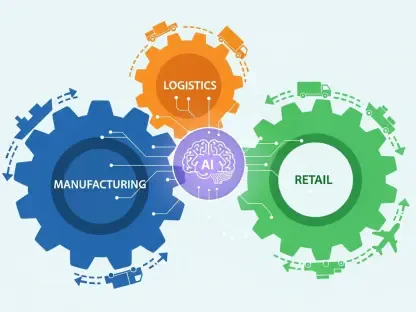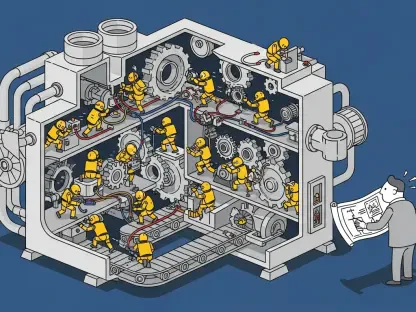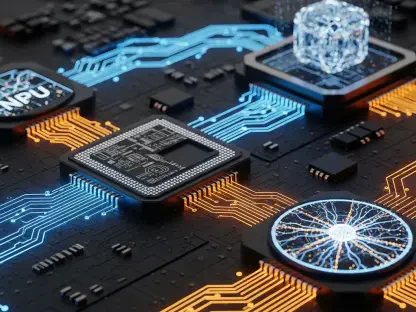The development of robotic systems has come a long way, particularly in the area of tactile capabilities. Researchers at the Technical University of Munich (TUM) have made significant strides in improving how robots are categorized and evaluated. This article delves into their innovative approach, focusing on the “Tree of Robots,” an evolving encyclopedia aimed at enhancing the understanding, comparison, and development of robotic systems based on their performance metrics, especially tactile capabilities.
The Evolution of Tactile Robots
Early Innovations in Robotics
Over the last twenty years, robotics has witnessed the introduction of lightweight systems equipped with torque sensors in every joint, which marked a significant innovation in the field. This development proved to be the foundational technology that enabled robots to interact with their environment through touch. These early systems were groundbreaking, significantly broadening the scope of tasks robots could perform accurately and autonomously.
As these tactile robots evolved, they became more intricate in design, featuring advanced controllers and reaction schemes. These improvements allowed robots to perceive their surroundings more effectively and respond accordingly, enhancing their interaction capabilities. The early innovations in robotics laid the groundwork for advancements that would see robots transitioning from rigid, pre-programmed machines to more adaptable, intelligent systems. The ability to sense touch opened new possibilities in various domains, including industrial, medical, and service applications.
Advancements in Technology
With continuous technological advancements, tactile robots have evolved to become more adept at perceiving and responding to their surroundings. These enhancements have been crucial in improving robot performance in a variety of tasks, making them more autonomous and efficient. The integration of sophisticated sensors and advanced algorithms has allowed robots to accurately interpret tactile information, improving their interactions with the environment and ensuring safety in human-robot interactions.
For instance, development in sensor technology has led to the creation of more sensitive and precise touch sensors. These sensors can detect slight variations in pressure and texture, enabling robots to handle delicate objects or execute intricate tasks that require a gentle touch. Additionally, the evolution of control algorithms and machine learning techniques has contributed to significant improvements in robots’ adaptability and performance in dynamic environments. These advancements have expanded the realm of possibilities for robots, allowing them to effectively function in real-world applications.
Current Classification Challenges
Limitations of Traditional Methods
Most traditional robot classification methods focus solely on individual mechanical properties or new controller features, failing to address the robots’ ability to adapt and interact tactilely with their environment. This approach often overlooks the core purpose of robotic systems—to assist in executing tasks effectively. Consequently, these traditional methods do not provide a comprehensive overview of a robot’s true capabilities, particularly in dynamic and complex environments where adaptability and tactile interaction are crucial.
Traditional classifications are often based on rigid criteria such as size, weight, speed, and payload capacity. While these parameters are important, they do not capture the nuances of a robot’s performance in real-world scenarios. The ability to adapt to unforeseen circumstances, handle diverse objects, and safely interact with humans is becoming increasingly important in modern robotics. Failing to account for these factors in classification systems can lead to misinterpretations of a robot’s efficacy and potential, ultimately limiting its applications and advancements in fields that require nuanced and precise interactions.
Need for Comprehensive Metrics
Recognizing the shortcomings of traditional classification methods, TUM researchers emphasize the importance of tactile capabilities and overall performance fitness in their new classification system. Their aim is to create a more holistic understanding of a robot’s capabilities, considering the intricate balance between mechanical properties, control algorithms, and sensory inputs. This approach promises to provide a more accurate depiction of a robot’s performance and its ability to execute tasks effectively in varying conditions.
This comprehensive metric system includes specific evaluations such as tactility fitness, which assesses a robot’s ability to interact safely and effectively with humans, and motion fitness, which measures the precision of a robot’s movements. By incorporating these detailed performance metrics, the classification system can offer a more nuanced view of a robot’s capabilities, guiding researchers and developers in optimizing robot design for specific applications. This method ensures that the performance characteristics aligned with the intended use-case are prioritized, leading to more efficient, adaptable, and capable robotic systems.
The AI Robot Performance and Safety Center
Establishment and Objectives
To address the limitations of existing classification methods, TUM researchers established the AI Robot Performance and Safety Center. This dedicated laboratory is equipped with advanced measurement devices designed to rigorously evaluate robot performance based on a variety of metrics. The establishment of this center signifies a committed effort to revolutionize robot categorization and ensure robotic systems are assessed comprehensively.
The primary objective of the center is to create a standardized platform for evaluating and comparing robotic systems. By focusing on a diverse set of performance metrics, particularly those involving tactile interactions, the center aims to produce a more meaningful classification system that reflects the true capabilities of modern robots. Additionally, the AI Robot Performance and Safety Center serves as a research hub, continuously contributing to the development and refinement of performance standards and safety protocols for robotic systems. This foundational work aims to elevate the quality and functionality of robots, paving the way for more sophisticated and capable systems.
The Tree of Robots Encyclopedia
The “Tree of Robots” serves as a continuously updated encyclopedia, providing detailed information about different robotic systems. It categorizes robots based on specific metrics such as tactility fitness, motion fitness, and other relevant performance indicators. This innovative platform functions similarly to a Wikipedia for robotics, offering an expansive, organized repository of robot data that highlights their specialized capabilities and performance metrics.
The encyclopedia’s utility extends beyond mere categorization; it serves as an educational tool, enabling researchers, developers, and end-users to understand the intricacies of various robotic systems. By offering insights into the fundamental body structures, sensors, motors, and control algorithms of different robots, the Tree of Robots provides a comprehensive resource for evaluating and comparing the fitness of robots for specific tasks. This exhaustive approach underscores the importance of aligning hardware, software, and sensory components to achieve optimal performance.
Dimensions of Robot Categorization
Tactility Fitness and Motion Fitness
The categorization focuses on metrics like tactility fitness, which assesses a robot’s ability to interact safely and effectively with humans, and motion fitness, which measures the precision of a robot’s movements. These metrics provide a comprehensive evaluation of a robot’s performance, crucially impacting their practical application in various fields. Tactility fitness, for instance, is essential for robots working in close proximity to humans or handling delicate tasks where precise touch is necessary.
Motion fitness, on the other hand, evaluates the accuracy and fluidity of a robot’s movements, which is vital for tasks requiring fine motor skills or intricate manipulations. By focusing on these specific performance metrics, the classification system offers a detailed analysis of a robot’s strengths and weaknesses, enabling a more informed selection process for specific applications. This approach ensures that robots are not only capable in terms of raw mechanical power but are also adept at executing tasks that require a high degree of precision and control.
Holistic Design Approach
Emphasizing the integration of hardware and software components, the research advocates for a holistic design approach that optimizes robot performance for specific processes. This strategy contrasts with designing processes to fit existing system constraints, a common practice that often limits the potential of robotic systems. By focusing on the seamless integration of all components, the holistic design approach aims to create robots that are not only mechanically robust but also highly adaptable and efficient in executing tasks.
This integrative strategy considers the synergistic relationship between a robot’s mechanical structure, control algorithms, and sensory inputs. By aligning these elements, researchers can develop robots that are more responsive and capable in dynamic environments. This approach promotes innovation, encouraging the development of versatile robotic systems that can be tailored to a wide range of applications, from industrial automation to personalized healthcare. Ultimately, the holistic design philosophy strives to enhance the overall effectiveness and adaptability of robotic systems, leading to more advanced and user-friendly robots.
Expanding the Encyclopedia
Broadening Robot Categories
Initially, the researchers analyzed stationary industrial manipulators using the fitness metrics of tactility and motion. However, the goal is to expand the Tree of Robots to encompass a broader range of robotic systems, including service robots, care robots, humanoids, and mobile robots. This expansion aims to capture the diverse capabilities and applications of modern robotics, providing a more comprehensive resource for researchers and developers.
By including a wider array of robotic systems, the Tree of Robots can offer insights into the unique performance characteristics of various robot types. Service robots, for example, require different capabilities compared to industrial manipulators, such as enhanced human-robot interaction skills and adaptability to dynamic environments. Similarly, care robots and humanoids have specific requirements regarding safety and precision in human-centric tasks. The expansion of the encyclopedia ensures that these diverse needs are addressed, promoting a deeper understanding of the specialized abilities of different robots.
Continuous Updates and Standards
The encyclopedia will be an evolving platform, continually updated with new information about robotic systems. This will also contribute to the development of standards and certifications for tactile robotic systems, guiding the future of robotics research and application. By maintaining a dynamic and current repository of data, the Tree of Robots ensures that the latest advancements in robot technology and performance metrics are accessible to the robotics community.
Continuous updates are essential for keeping pace with the rapid advancements in robotics. As new technologies and methodologies emerge, the encyclopedia can integrate these innovations, providing an up-to-date resource that reflects the state-of-the-art in robotics. Moreover, by contributing to the development of standards and certifications, the Tree of Robots plays a crucial role in establishing industry benchmarks for safety and performance. These standards ensure that robots are designed and deployed in a manner that prioritizes user safety and enhances operational efficiency.
Future Prospects and Impacts
Application Design and Research
The detailed categorization provided by the Tree of Robots informs application design, helping identify the best robotic systems to test new algorithms. It supports ongoing research efforts by providing a comprehensive resource for roboticists and computer scientists. The ability to evaluate robots based on specific performance metrics ensures that the most suitable systems are selected for particular applications, enhancing the efficiency and effectiveness of research and development projects.
By offering a clear and detailed understanding of each robot’s capabilities, the Tree of Robots enables researchers to design experiments and applications that fully exploit the strengths of the chosen robotic systems. This approach accelerates innovation, facilitating the development of advanced algorithms and control strategies tailored to the unique attributes of different robots. Additionally, the encyclopedia serves as a valuable benchmark, allowing researchers to compare the performance of new robotic systems against established standards, fostering continuous improvement and advancement in the field.
Revolutionizing Robotics
The evolution of robotic systems has made significant progress, particularly in the realm of tactile capabilities. Researchers at the Technical University of Munich (TUM) have achieved notable advancements in the ways robots are classified and assessed. This article explores their groundbreaking methods, with a specific emphasis on the “Tree of Robots.” This dynamic encyclopedia aims to deepen the understanding, facilitate comparison, and foster the development of robotic systems, focusing on their performance metrics, especially those related to tactile abilities. The “Tree of Robots” serves as an invaluable resource, continually updating to reflect the latest advancements and innovations in robotics. It provides a comprehensive framework that not only categorizes existing robotic systems but also sets benchmarks for future developments. By prioritizing tactile capabilities, TUM’s approach addresses a critical aspect of robotics, ensuring that systems can better interact with and respond to their environments. This initiative marks a significant step forward in the quest to enhance the functionality and versatility of robots.









